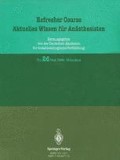Zusammenfassung
Lachgas gilt bei vielen Anästhesisten als weitgehend inertes und damit problemlos anzuwendendes Narkosegas. Es begleitet uns seit den Anfängen der klinischen Anästhesie. Auch wenn die erste Demonstration von Lachgas zu Narkosezwecken durch Horace Wells (1815–1848) im Januar 1845 fehlschlug, so ist doch die Entwicklung der Narkosegerätetechnologie seit etwa 1860 auf das engste mit dem routinemäßigen Einsatz von Lachgas bei den verschiedenen Verfahren der Allgemeinanästhesie verknüpft [1–3]. Schon 1800 weist Humphrey Davy (1778–1829) in der von ihm verfassten wissenschaftlichen Monographie über dieses Gas auf dessen analgetische Potenz hin und schlußfolgert, dass es wahrscheinlich zur Schmerzausschaltung während der Durchführung operativer Eingriffe eingesetzt werden könne:
As nitrous oxide in its extensive operation appears capable of destroying physical pain, it may probably be used with advantage during surgical operations in which no great effusion of blood takes place [4].
Access this chapter
Tax calculation will be finalised at checkout
Purchases are for personal use only
Preview
Unable to display preview. Download preview PDF.
Literatur
Smith WDA (1982) Under the influence. A history of nitrous oxide and oxygen anaesthesia. The crucial experiment, its eclipse and its revival. The Wood Library-Museum of Anesthesiology, Park Ridge/IL, pp 53–66
Duncum B (1994) Nitrous oxide. In: The development of inhalation anaesthesia. Royal Society of Medicine Press, London, pp 273–310
Baum JA (1998) Who introduced the rebreathing system into clinical practice? In: Schulte am Esch J, Goerig M (eds) Proceedings of the 4th International Symposium on the History of Anaesthesia. Dräger, Lübeck, pp 441–450
Davy H (1800) Researches, chemical and philosophical; chiefly concerning nitrous oxide, or dephlogisticated nitrous air, and its respiration. J. Johnson, London, p 556
Parbrook GD (1967) The levels of nitrous oxide analgesia. Br J Anaesth 39: 974–982
Dale O, Husum B (1994) Nitrous oxide: from frolics to a global concern in 150 years. Acta Anaesth Scand 38: 749–750
Eger EI, Lampe GH, Wauk LZ, Whitendale P, Cahalan MK, Donegan JH (1990) Clinical pharmacology of nitrous oxide: an argument for its continued use. Anesth Analg 71: 575–585
Schirmer U (1998) Lachgas-Entwicklung und heutiger Stellenwert. Anästhesist 47: 245–255
James MFM (1999) Nitrous oxide: still useful in the year 2000? Curr Opin Anaesthesiol 12: 461–466
Vic P, Laguette D, Blondin G et al. (1999) Use of 50% oxygen-nitrous oxide mixture in a general pediatric ward. Arch Pédiatrie 6: 844–848
Brodsky JB, Cohen EN (1986) Adverse effects of nitrous oxide. Med Toxicol 1: 362–374
Scheinin B, Lindgren L, Scheinin TM (1990) Perioperative nitrous oxide delays bowel function after colonic surgery. Br J Anaesth 64: 154–158
Watts A, Luney SR, Lee D, Gelb AW (1998) Effect of nitrous oxide on cerebral blood flow velocity after induction of hypnocapnia. J Neurosurg Anaesthesiol 10: 142–145
Eisele JH, Reitan JA, Massumi RA, Zelis RF, Miller RR (1976) Myocardial performance and N2O analgesia in coronary-artery disease. Anesthesiology 44: 16–20
Stowe DF, Monroe SM, Marijic J et al. (1990) Effects of nitrous oxide on contractile function and metabolism of the isolated heart. Anesthesiology 73: 1220–1226
Hohner P, Reiz S (1994) Nitrous oxide and the cardiovascular system. Acta Anaesthesiol Scand 38: 763–766
Takàcs J (1996) N2O-induzierte akute funikuläre Myelose bei latentem Vitamin-B12-Mangel. Anästhesiol Intensivmed Notfallmed Schmerzther 31: 525–528
Sesso RMCC, Iunes Y, Melo ACP (1999) Myeloneuropathy following nitrous oxide anesthesia in a patient with macrocytic anaemia. Neuroradiology 41: 588–590
Fiege M, Wappler F, Pothmann W (1998) Gefährdung von Patienten mit schwerer chronischer Neutropenie durch Lachgasexposition. Anästh Intensivmed 39: 347–350
Hartung J (1996) Twenty-four of twenty-seven studies show a greater incidence of emesis associated with nitrous oxide than with alternative anesthetics. Anesth Analg 83: 114–116
Tramer M, Moore A, McQuay H (1996) Omitting nitrous oxide in general anaesthesia: meta-analysis of intraoperative awareness and postoperative emesis in randomized controlled trials. Br J Anaesth 76: 186–193
Schulte am Esch J (1994) Gefahren der Narkosegasbelastung am Arbeitsplatz. Anästh Intensivmed 35: 154–161
Marx T, Zwing M, Köble R, Fröba G, Klampp D, Georgieff M (1998) Lachgas als Leitsubstanz zur Beurteilung der Arbeitsplatzbelastung mit Narkosegasen. Anästhesiol Intensivmed Notfallmed Schmerzther 33: 27–31
Logan M, Farmer JG (1989) Anaesthesia and the ozone layer. Br J Anaesth 53: 645–646
Radke J, Fabian P (1991) Die Ozonschicht und ihre Beeinflussung durch N2O und Inhalationsanästhetika. Anästhesist 40: 429–433
Baum J (1998) Die Inhalationsnarkose mit niedrigem Frischgasfluß. Praxis der Low-Flow-und der Minimal-Flow-Anästhesie sowie der Narkose mit geschlossenem System, 3. Aufl. Thieme, Stuttgart
Röpcke H, Schwilden H (1996) Interaction of isoflurane and nitrous oxide combinations similar for median electroencephalographic frequency and clinical anesthesia. Anesthesiology 84: 782–788
Röpcke H (1999) Klinische Pharmakologie von Stickoxidul im Vergleich und im Zusammenwirken mit volatilen Anästhetika. Abstract DAK
Baum J, Berghoff M, Stanke HG, Petermeyer M, Kalff G (1997) Niedrigflußnarkosen mit Desfluran. Anästhesist 46: 287–293
Baum J, Stanke HG (1998) Low-Flow-und Minimal Flow-Anästhesie mit Sevofluran. Anästhesist 47 (Suppl 1): S 70-S 76
Stanke HG, Baum J (1999) Inhalationsnarkosekosten (INK), Vers. 3.0D. Computersimultionsprogramm zur Berechnung der Kosten von Narkosegasen. Damme.
Rights and permissions
Copyright information
© 2000 Springer-Verlag Berlin Heidelberg
About this paper
Cite this paper
Baum, J.A. (2000). Lachgas - unverzichtbar?. In: Refresher Course Aktuelles Wissen für Anästhesisten. Refresher Course Aktuelles Wissen für Anästhesisten, vol 26. Springer, Berlin, Heidelberg. https://doi.org/10.1007/978-3-642-59720-6_10
Download citation
DOI: https://doi.org/10.1007/978-3-642-59720-6_10
Publisher Name: Springer, Berlin, Heidelberg
Print ISBN: 978-3-540-66777-3
Online ISBN: 978-3-642-59720-6
eBook Packages: Springer Book Archive

